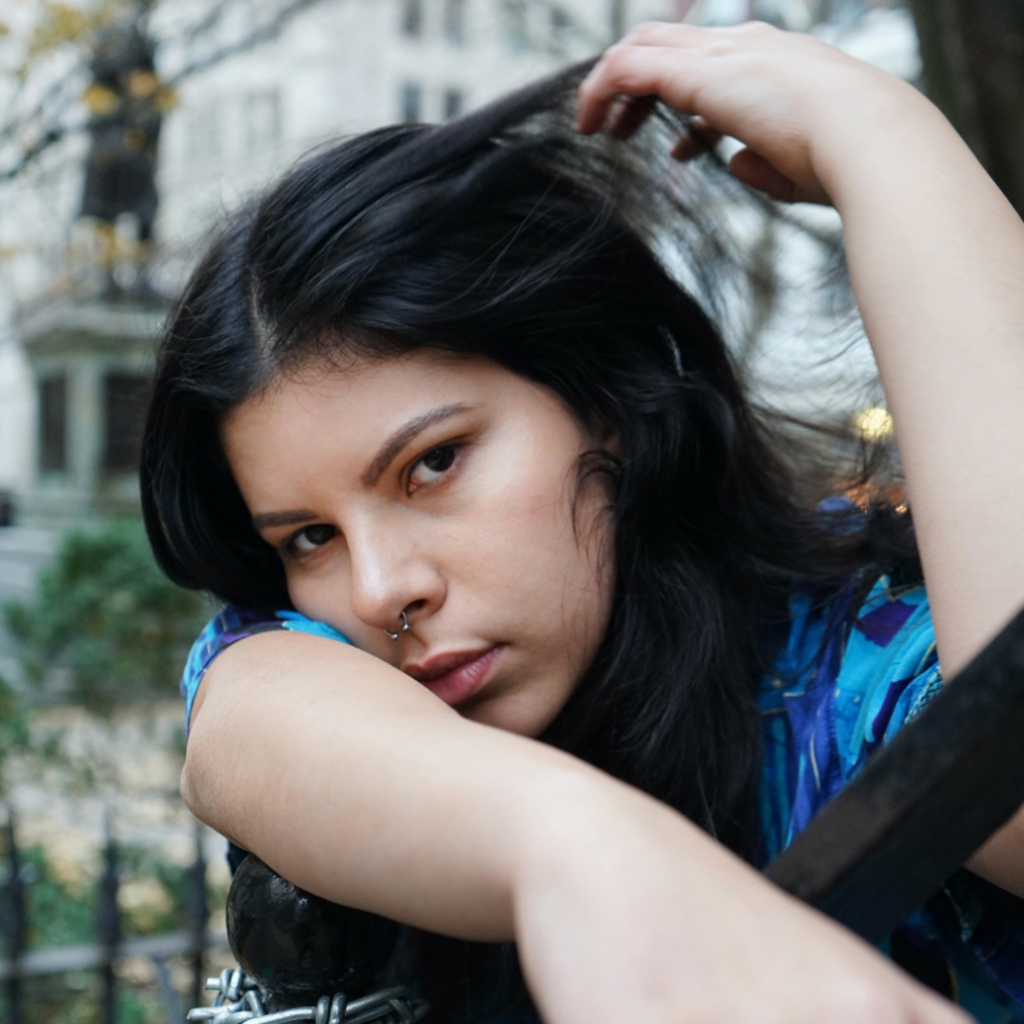Can you tell us a little about yourself?

Annielly Camargo is one of twelve artists selected as a Gallery 263 Small Works Project artist. This project presents artwork in flat files at the gallery and on our website for the duration of one year. All artists are based in Massachusetts.
What kind of art do you make?
My creations live through a variety of mediums ranging from video, installation, or alternative photographic processes. My most recent photo work has existed through cyanotype, Polaroid emulsion lifts and printing on fabric. I have printed on glass, doors, egg cartons, books and much more. I love the unconventional, the “trash”, the kind of thing most would turn away from. I love to test the subject/work and play with the survival of the mediums I introduce them into.
What concepts does your art explore?
As a visual artist and art activist, I hope to use my creative eye and methods of artistic expression to address important matters through emotional and historic human experiences. I want to provide the viewer with both wonder and awareness to certain topics in the work. Through this, the viewer as well as myself, become mutually educated in our own selves and the world around us. My art photography focuses on vulnerable bodies navigating challenging spaces. Physically placing my subject in places that reflects their current being and conceptualizing them together through their own personal written reflections. My documentation work showcase the many sides of a truth and the multiple dissections of our social structures. Bringing attention to both the joy and the pain from what is left within us through unity and separation. I hope my work brings renewal for those involved, and attention to those watching; allowing a deeper look into self and societal healing.
Can you tell us about the work you have on view in your flat file drawer at the gallery?
images of work



The work I have in the flat file drawer at the Gallery 263 consists of eight Polaroid pictures created using a Polaroid 680 camera and a Polaroid Lab. These images are of moments captured at various protests in and around the Boston area involving the ongoing racial equality movements, Trumps controversial regime, police brutality and Indigenous celebrations. I enjoy using Polaroid to capture these movements because it allows this present reality to feel archival and historical; it feels as though they have existed for longer than now. It is a documentation of this current state of our world. It is mourning as it is celebration. It is a call to those who have the means to show up and haven’t yet. It is a place for exaltation, a space of exhaustion and a documentation of a consistent fight for liberation.
Where do you make your work?
I make my work in my basement and living room area.
What are your favorite materials to use? Most unusual?
My favorite process of creation and materials to use are Polaroid film emulsion lifts, photos printed on a variety of fabrics, process of cyanotype on coffee filters, fabric and glass.
When did you decide you wanted to be an artist?
It feels like it was decided for me. School always directed me towards it. I picked up my first camera at 14 years old only because I would fill my phone up with bits of my everyday life and the most random images like shattered glass I found on my walk home from school. My parents would complain that I didn’t have enough phone storage to take pictures with my family, so they bought me a camera for my recreational use. Nine years later, I am still shooting anything and everything I can get my eyes on; but now filling up my hard drives instead. I always have felt the need to preserve something and photography has created a tangible way for me to do so. It has served as a reminder of the spaces and people who have given meaning to my very existence. Aside from it finding me, I often have had to remind myself since COVID-19, that I will always be an artist, even when I create nothing for some time. There are so many worlds to live in within a framed shot and I want to expose them all. I want to enlighten and be enlightened. I want to heal along with others through capturing them. Sometimes there’s something important to say, other times, what and who is in front of us says it all. We just have to look up, take it all in and frame our own meaning.